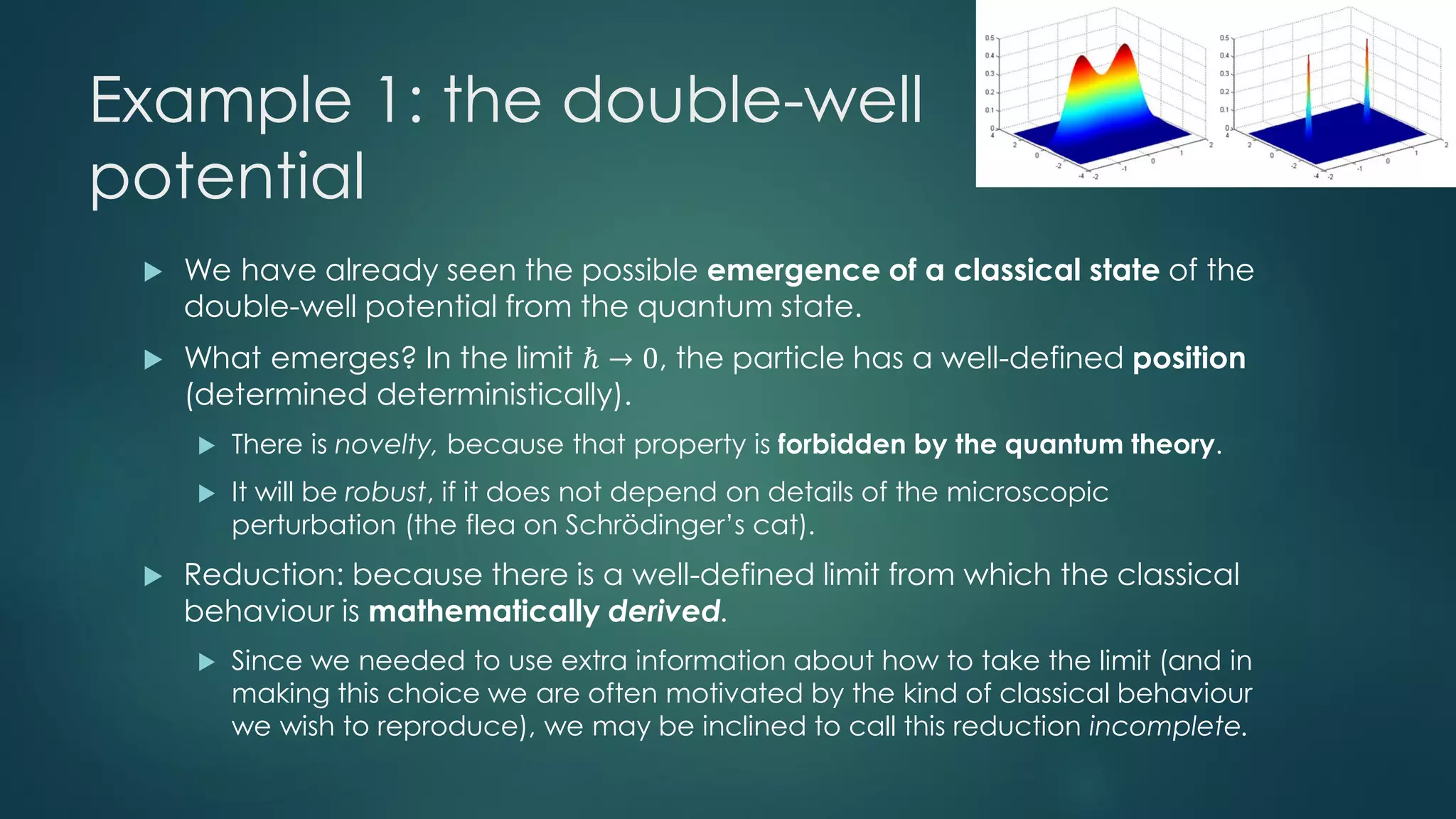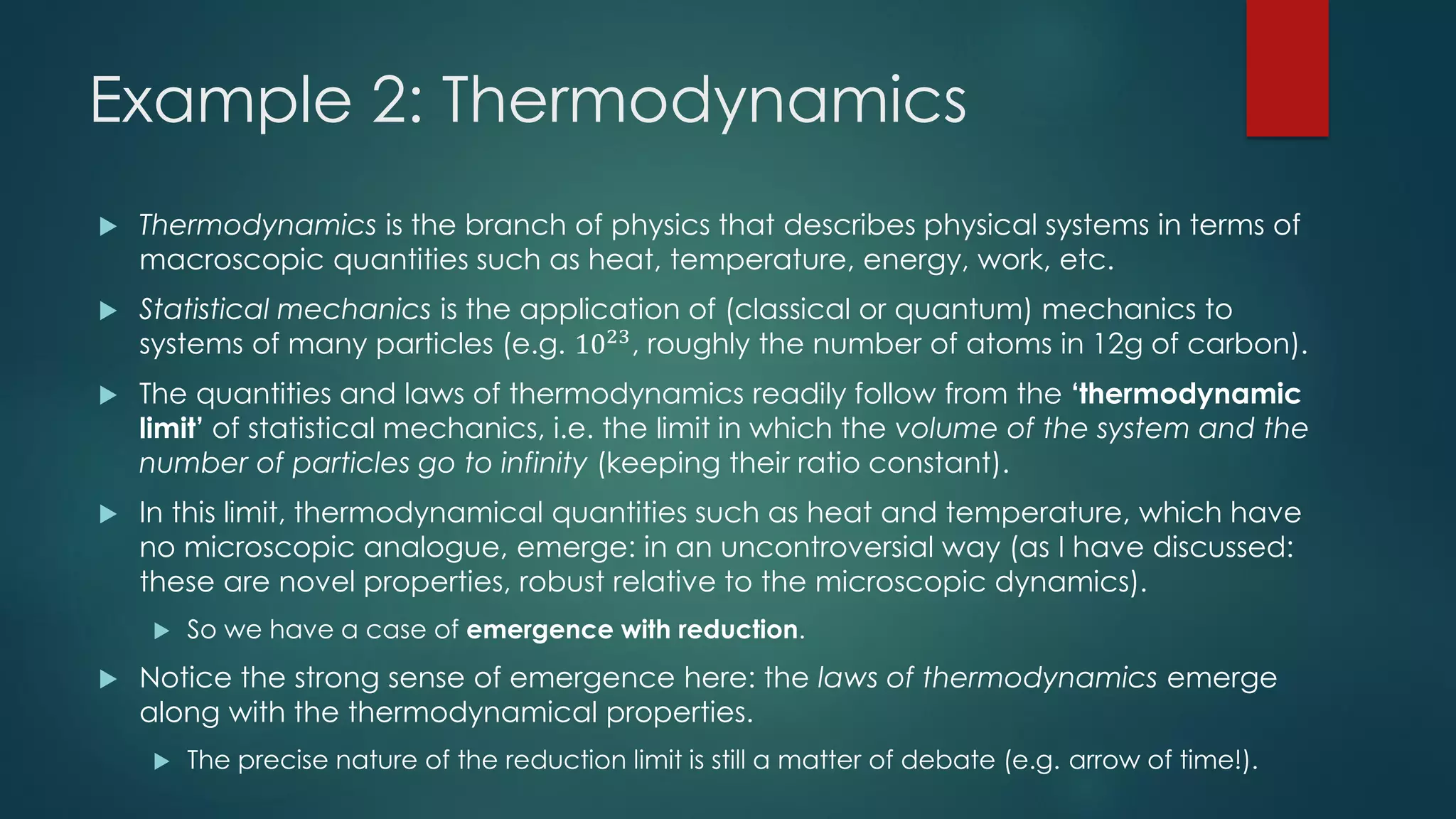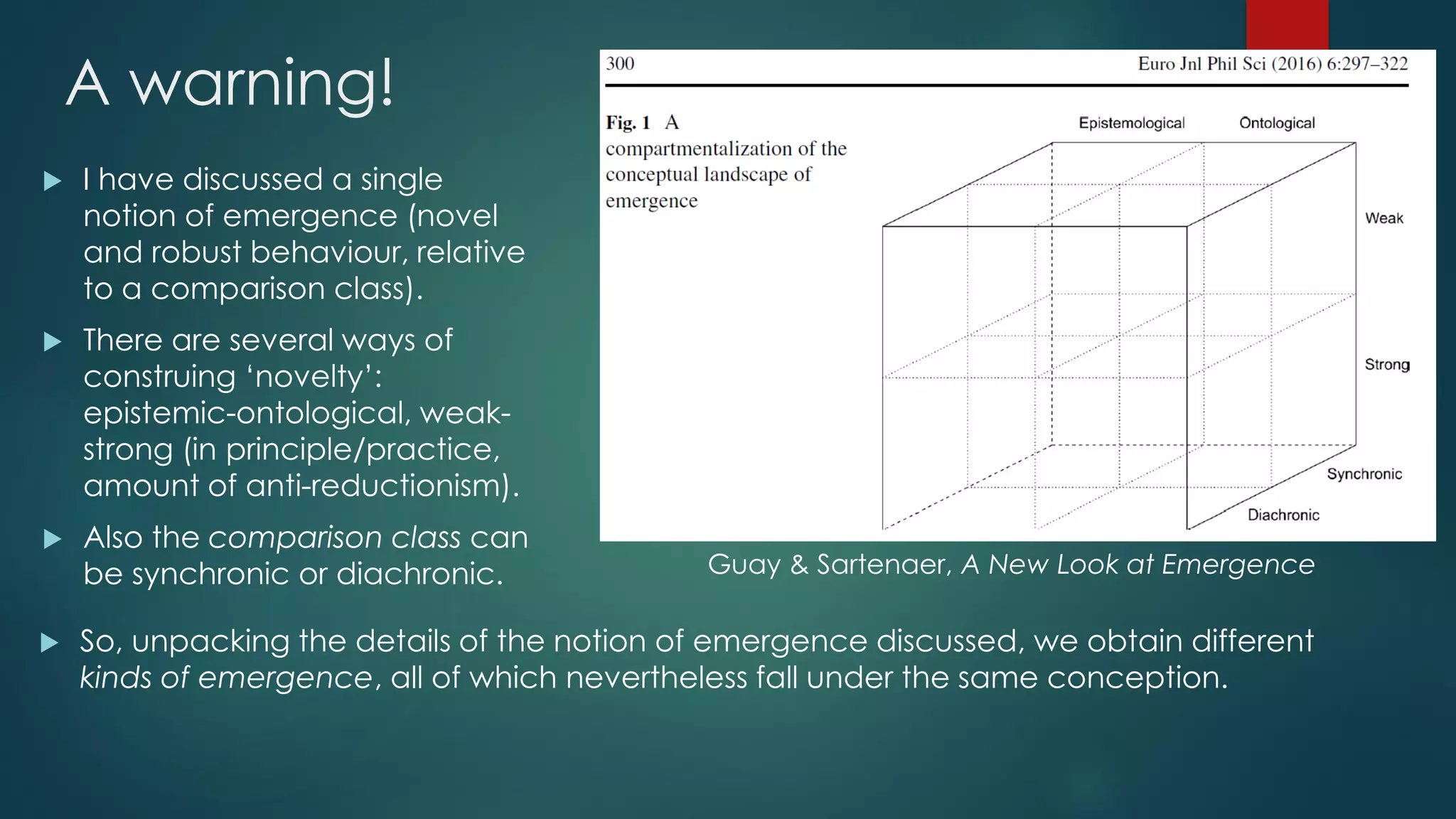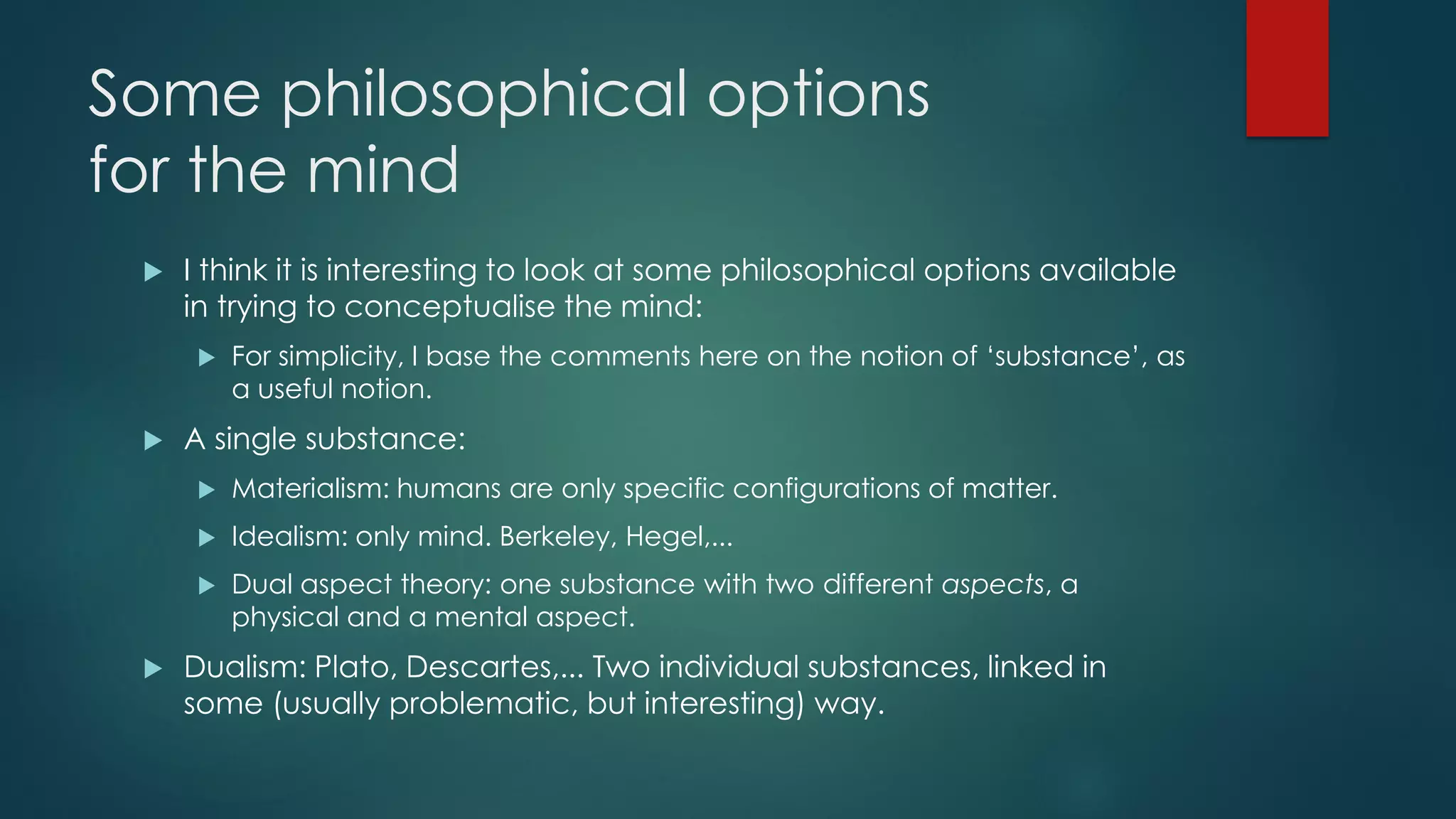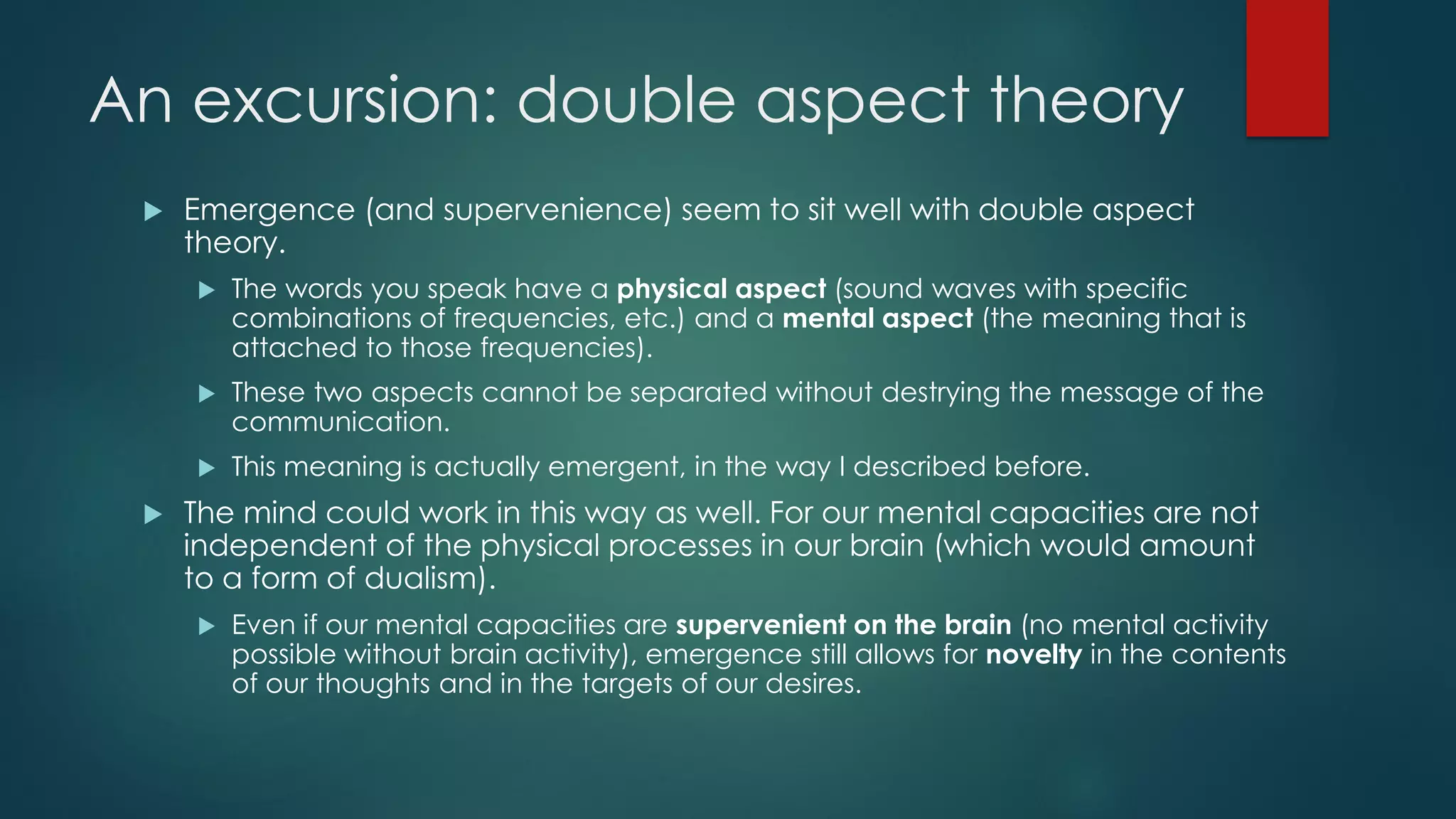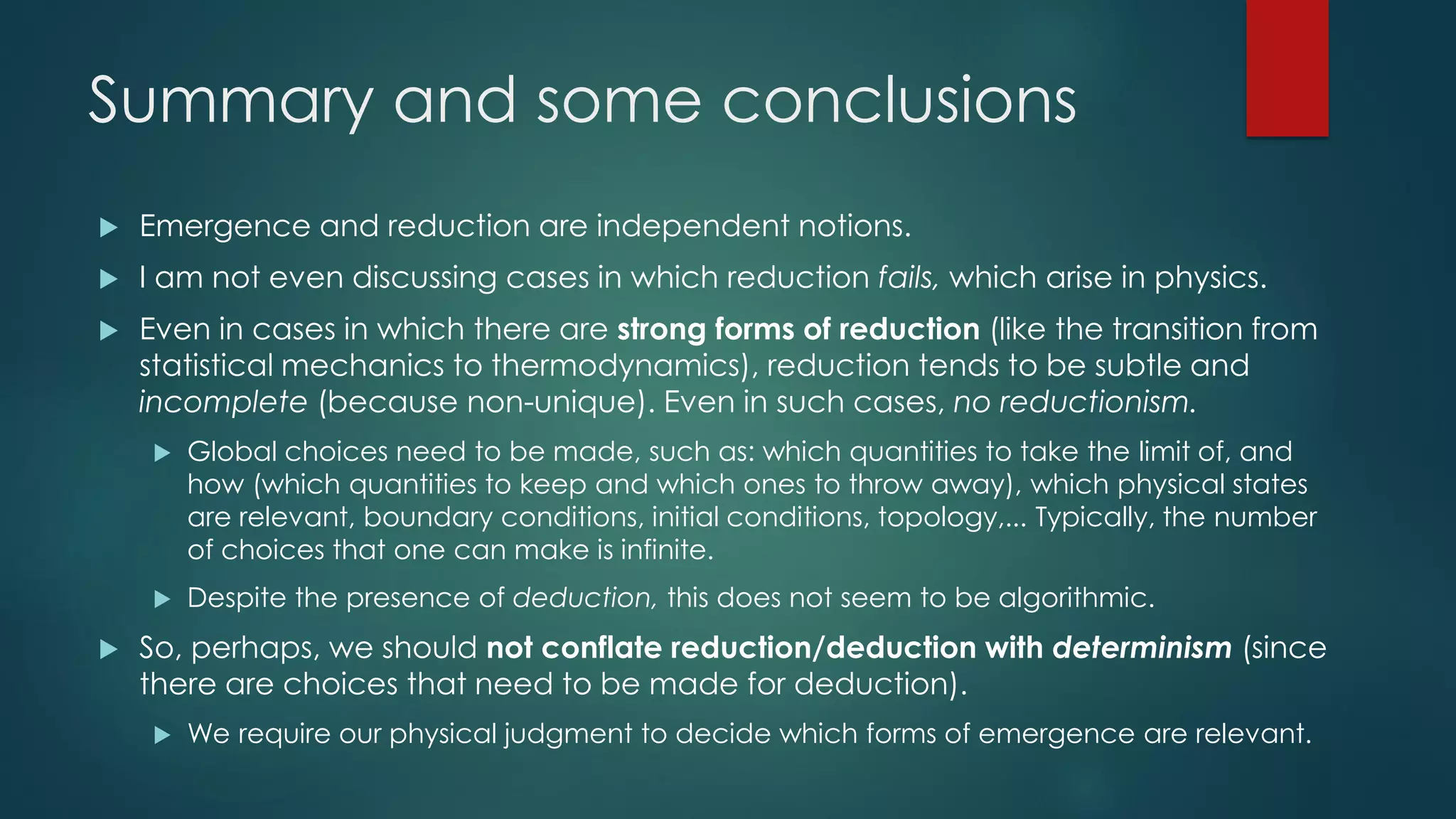(1) The document discusses the concepts of emergence and reduction in physics, specifically arguing that they pose a false dichotomy as they are logically independent.
(2) It provides examples where emergence occurs alongside reduction, such as the emergence of classical behavior from quantum mechanics in certain limits, and the emergence of thermodynamic laws and properties from statistical mechanics.
(3) The key point is that reduction, viewed as deduction, allows for novelty through the choices made in taking limits, such as which symmetries to break or states to keep. So emergence and reduction can be compatible.
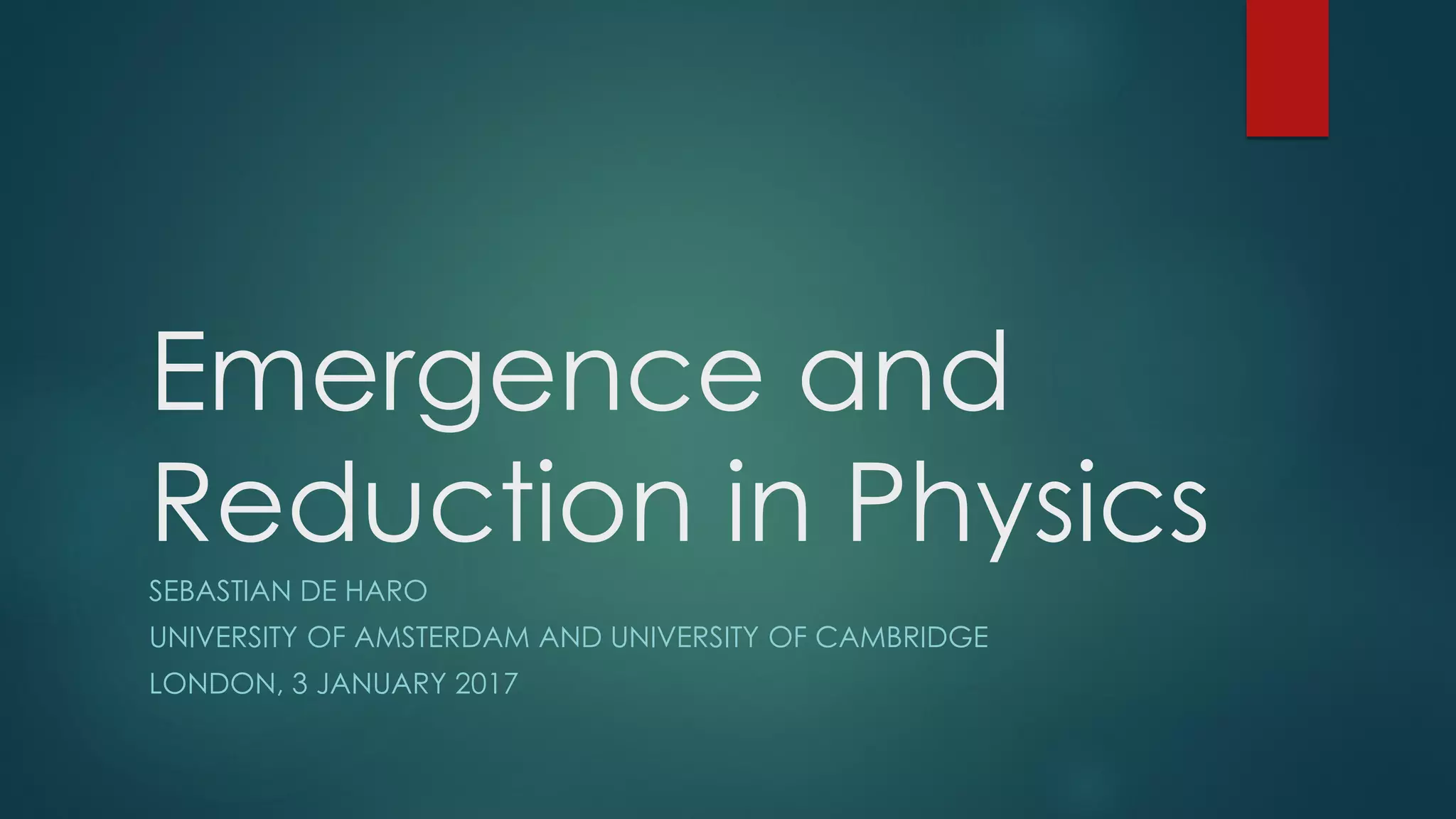
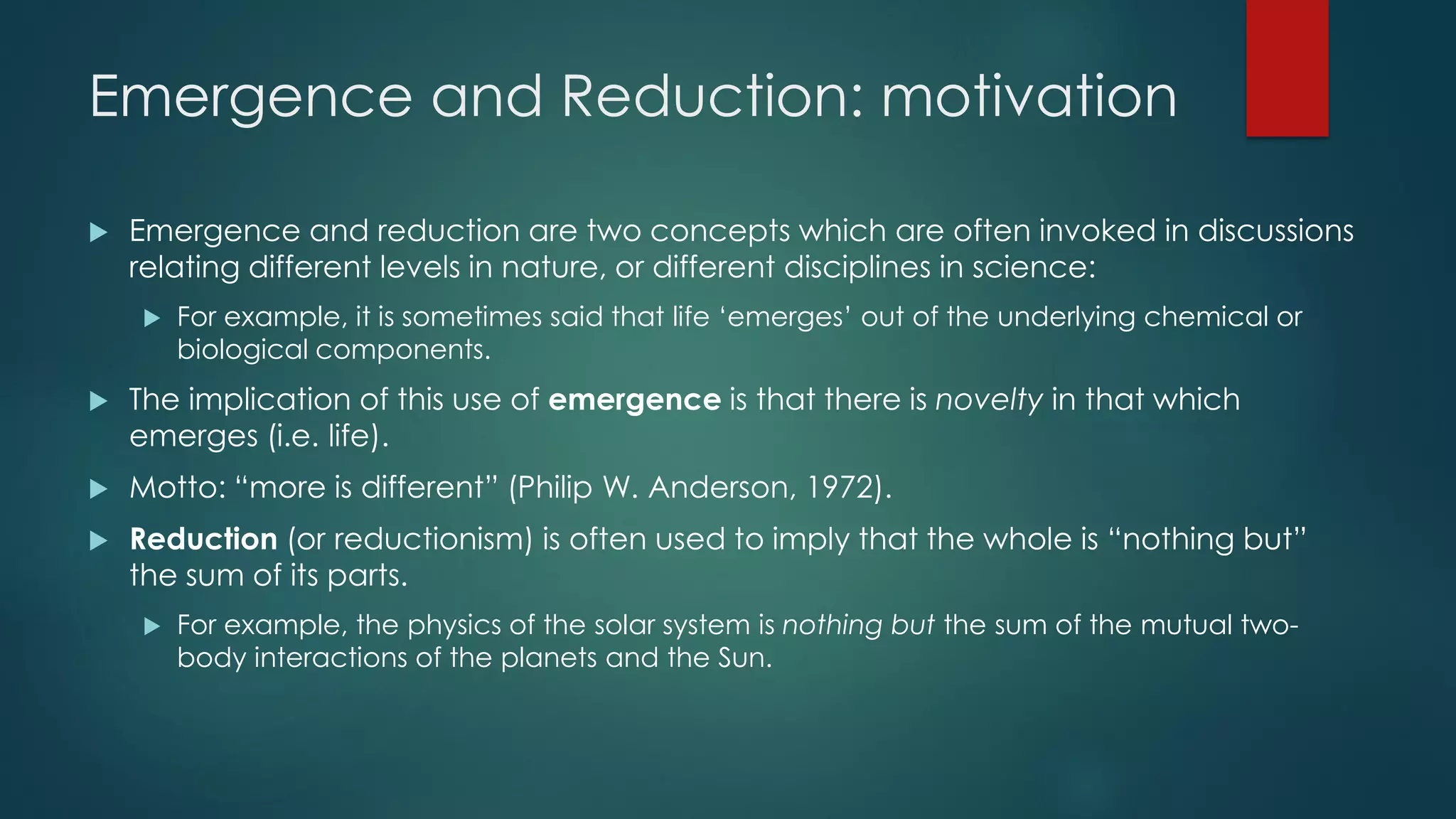

![Emergence vs. reduction:
not just an academic discussion
Steven Weinberg: “One of the members of the [SSC] board argued
that we should not give the impression that we think that
elementary particle physics is more fundamental than other fields,
because it just tended to enrage our friends in other areas of
physics. The reason we give the impression that we think that
elementary particle physics is more fundamental than other
branches of physics is because it is. I do not know how to defend
the amounts being spent on particle physics without being frank
about this.”
Philip Anderson: “They [the results of particle physics] are in no sense
more fundamental than what Alan Turing did in founding the
computer science, or what Francis Crick and James Watson did in
discovering the secret of life.”](https://image.slidesharecdn.com/170103emergence-170109185504/75/Emergence-and-Reduction-in-Physics-4-2048.jpg)

![Stephen Hawking
“By far the most important [prediction] is supersymmetry which is
fundamental to most attempts to unify Einstein's General Relativity
with Quantum Theory. This would be confirmed by the discovery of
superpartners to the particles that we already know. The
Superconducting Super Collider (the SSC) was being built in Texas
and would have reached the energies at which super partners
were expected. However, the United States went through a fit of
feeling poor and canceled the project half way. At the risk of
causing embarrassment, I have to say I think this was a very short
sighted decision. I hope that the US, and other governments will
do better in the next millennium.” (Millennium lecture)](https://image.slidesharecdn.com/170103emergence-170109185504/75/Emergence-and-Reduction-in-Physics-6-2048.jpg)
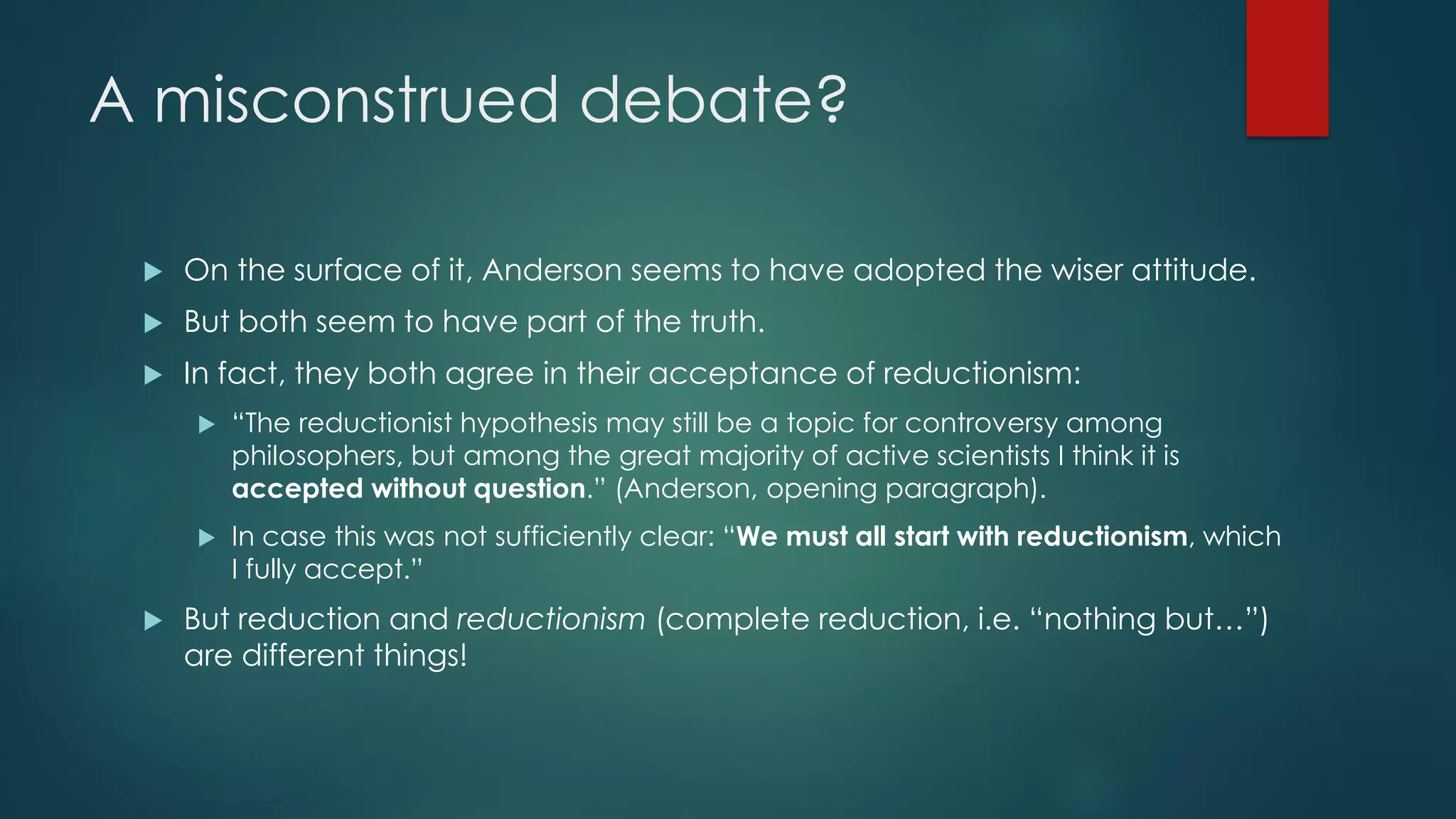
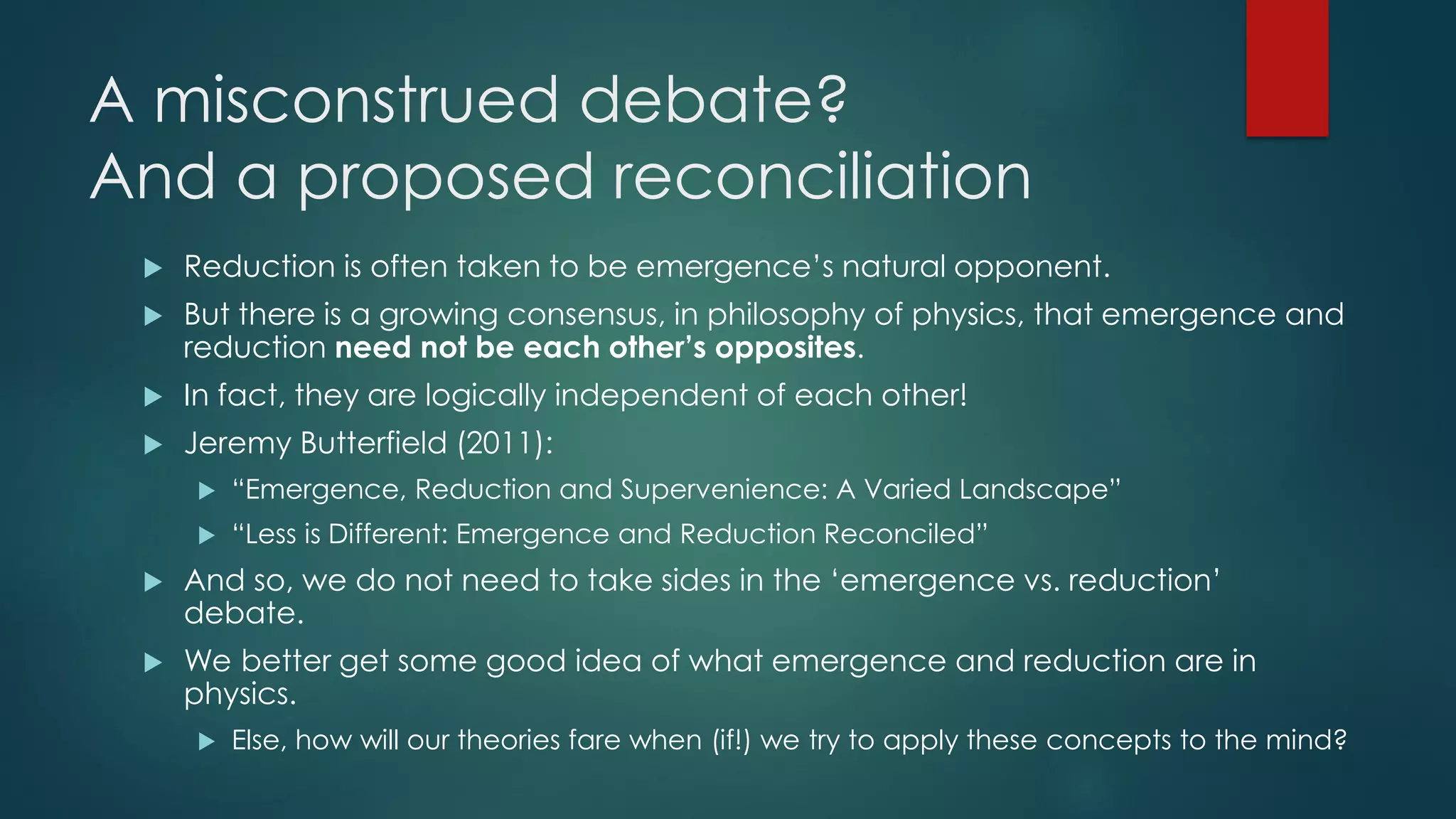

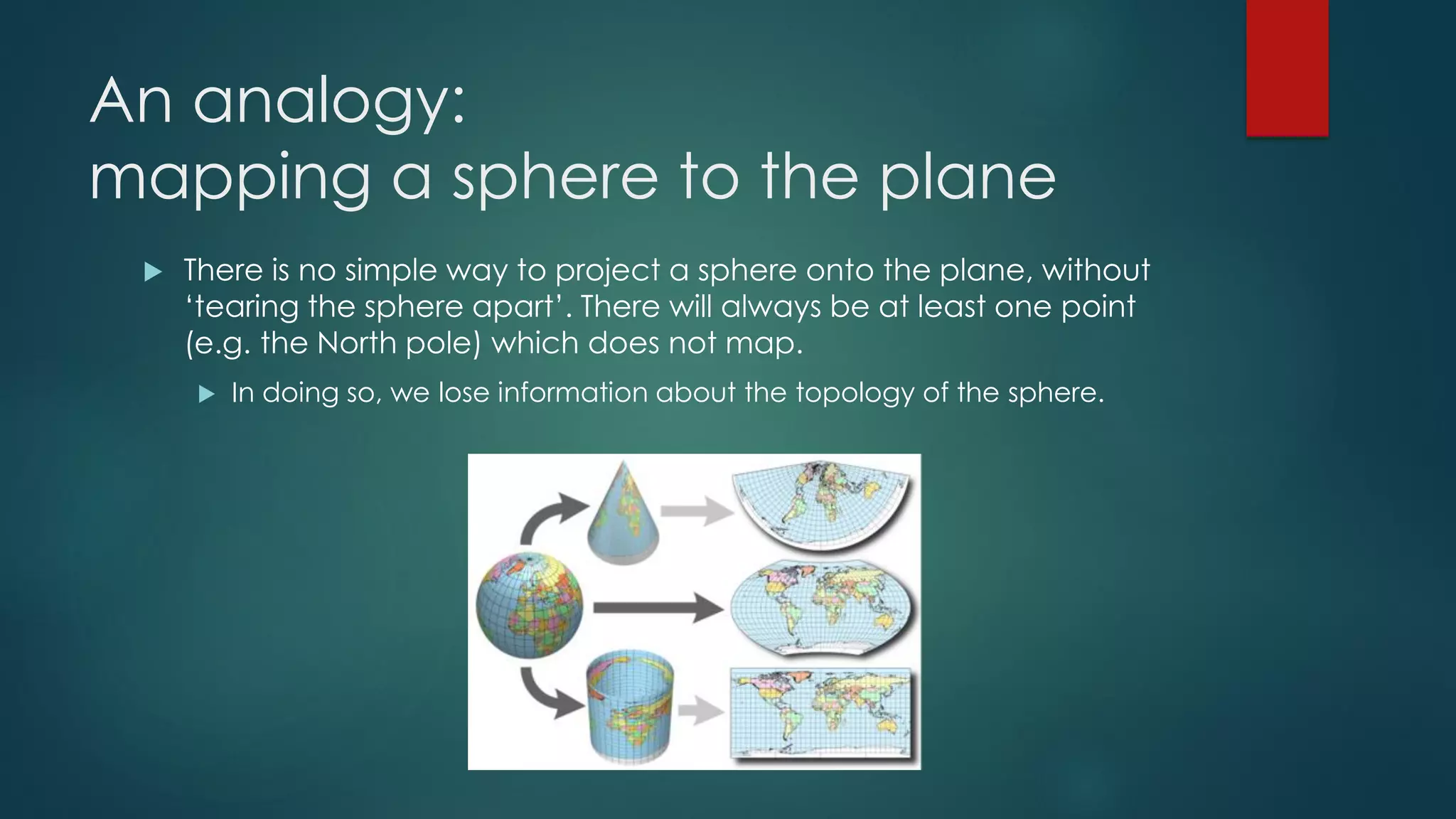
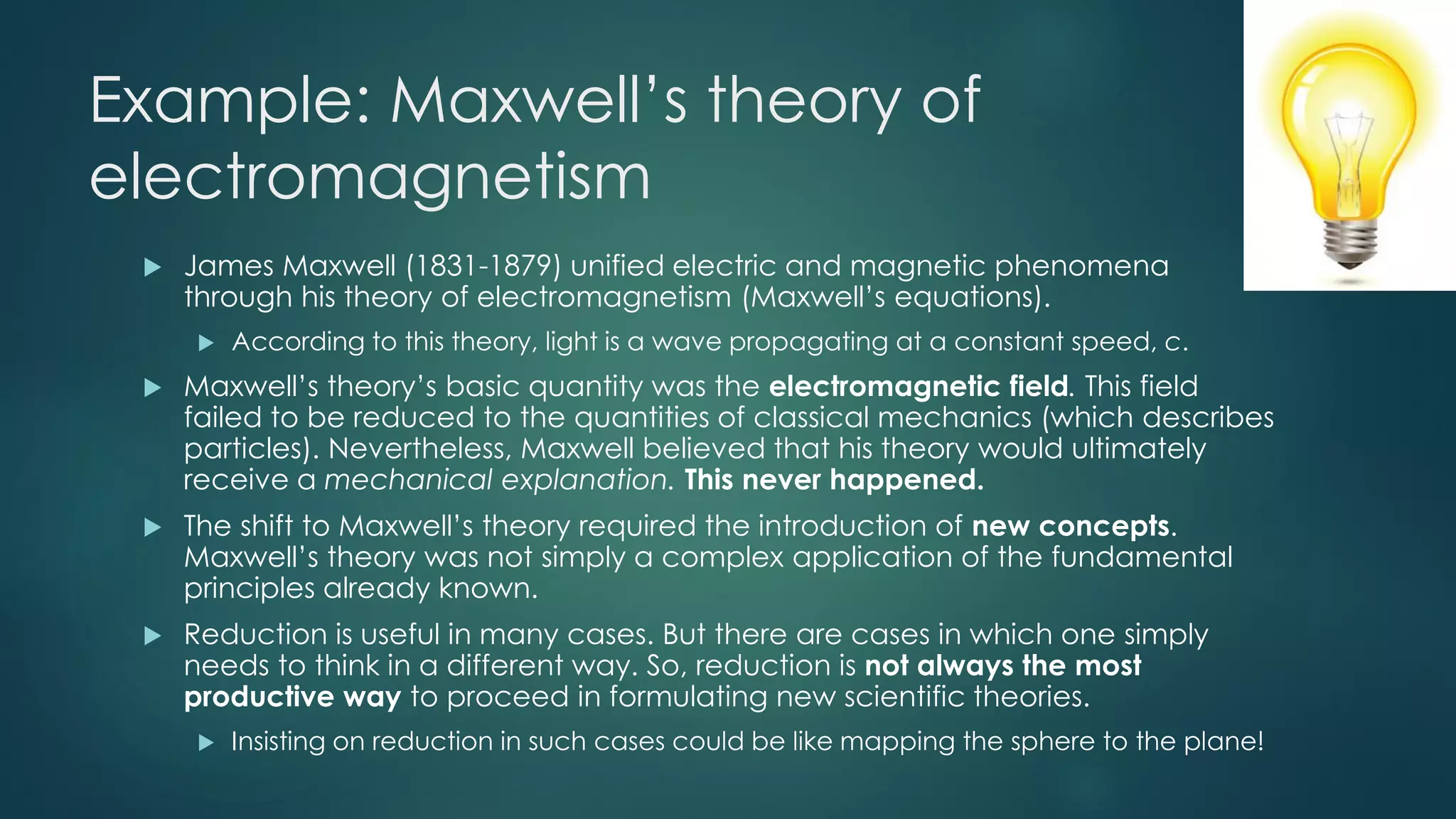
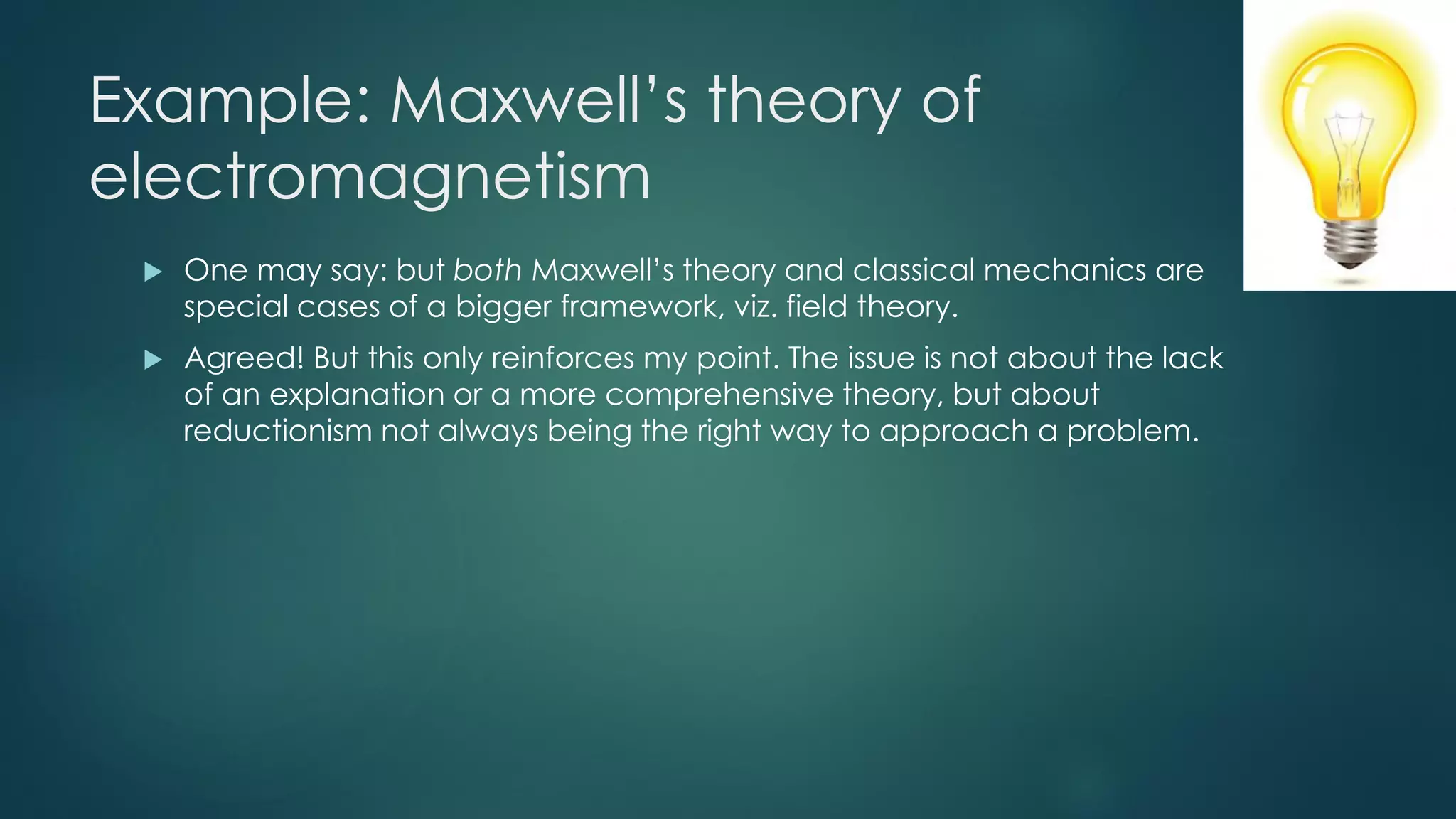
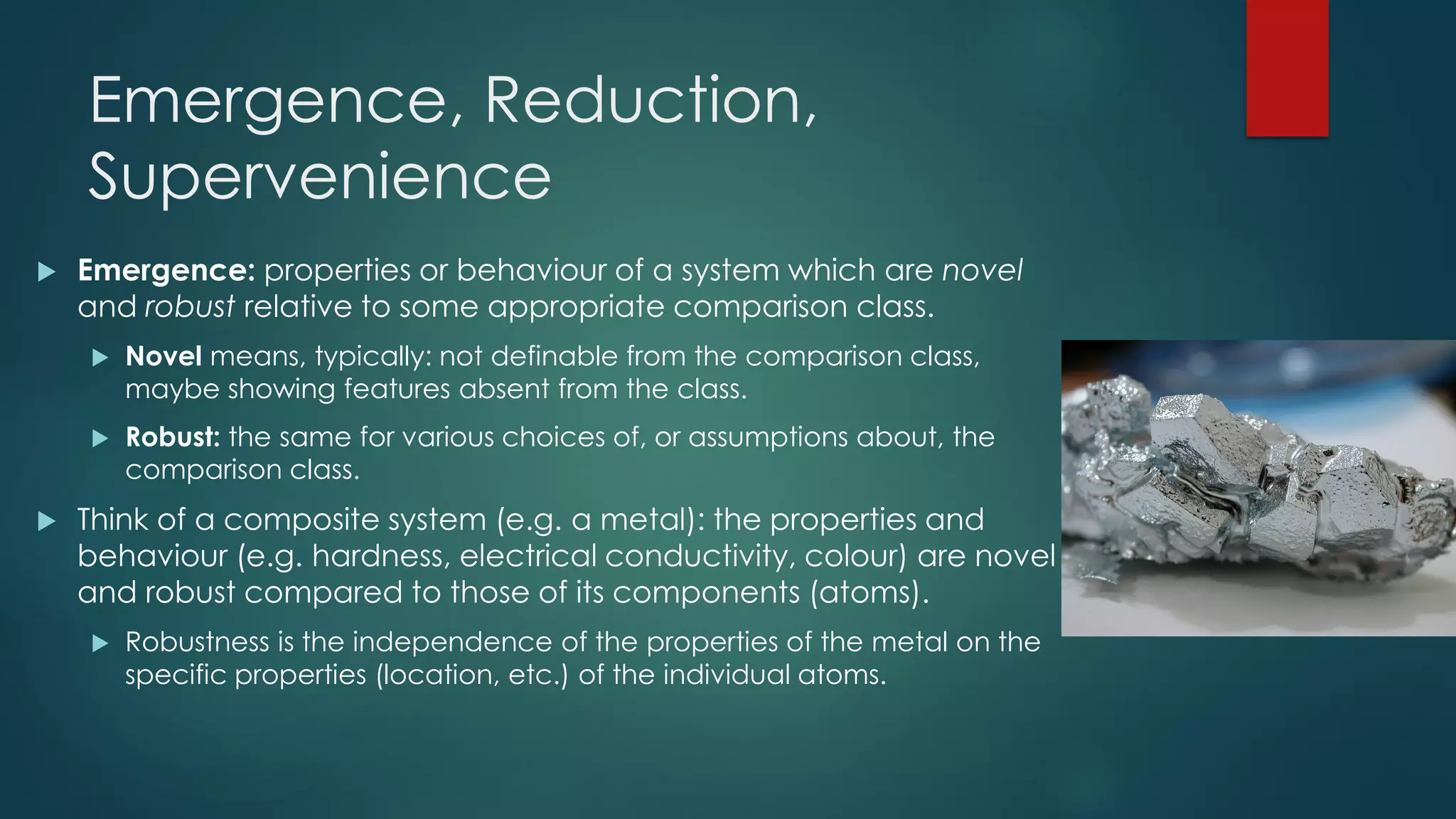
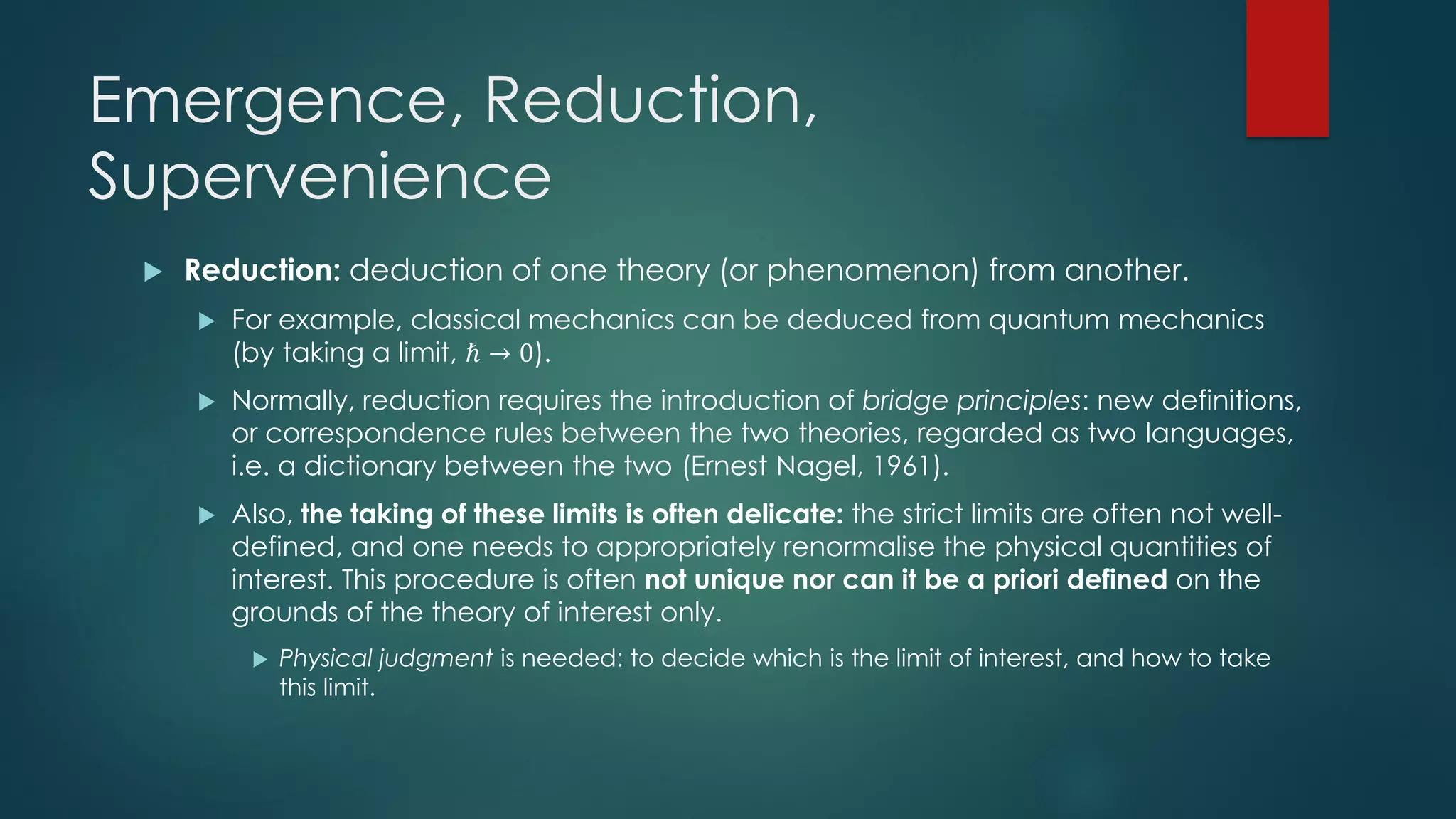
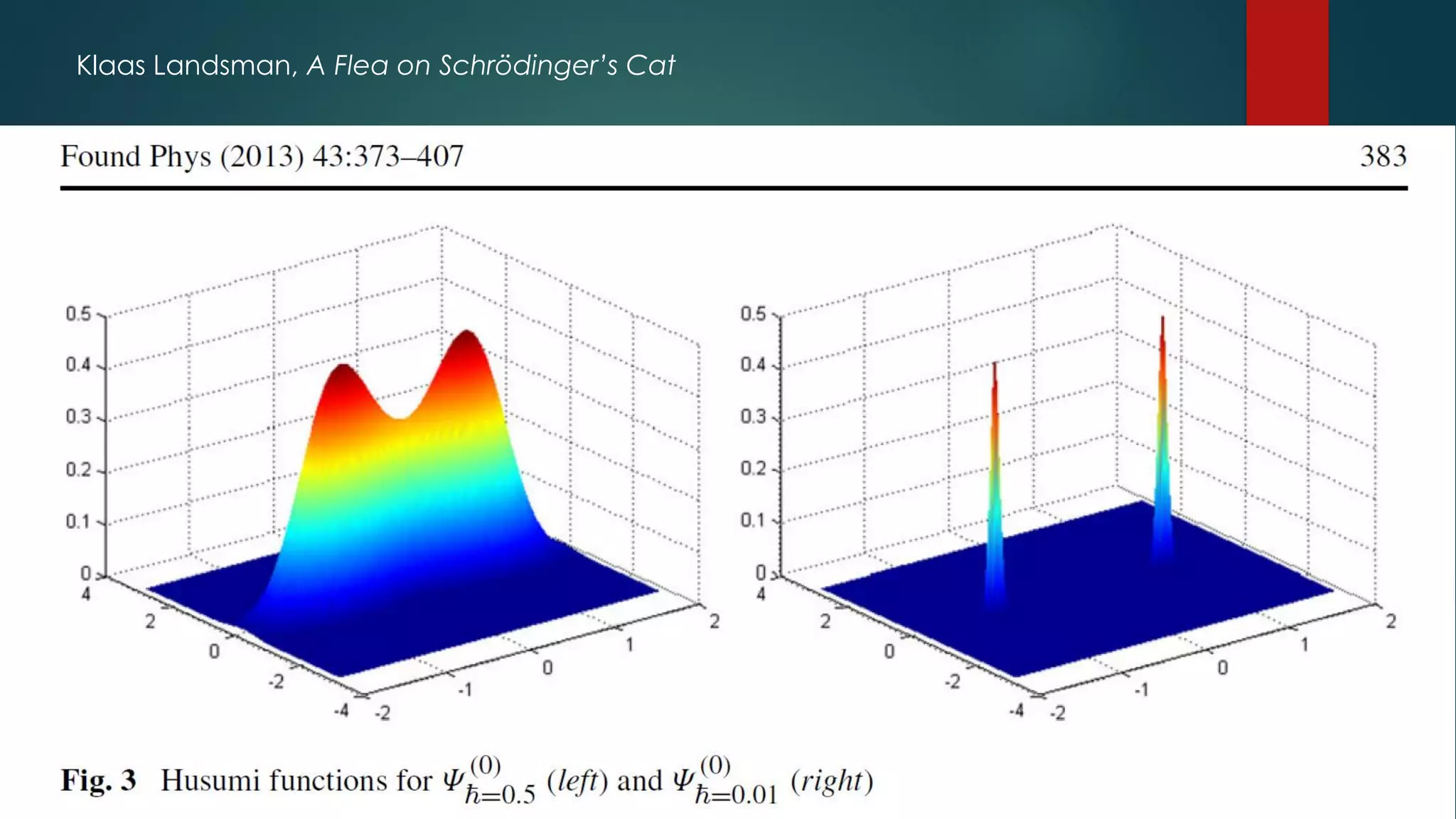
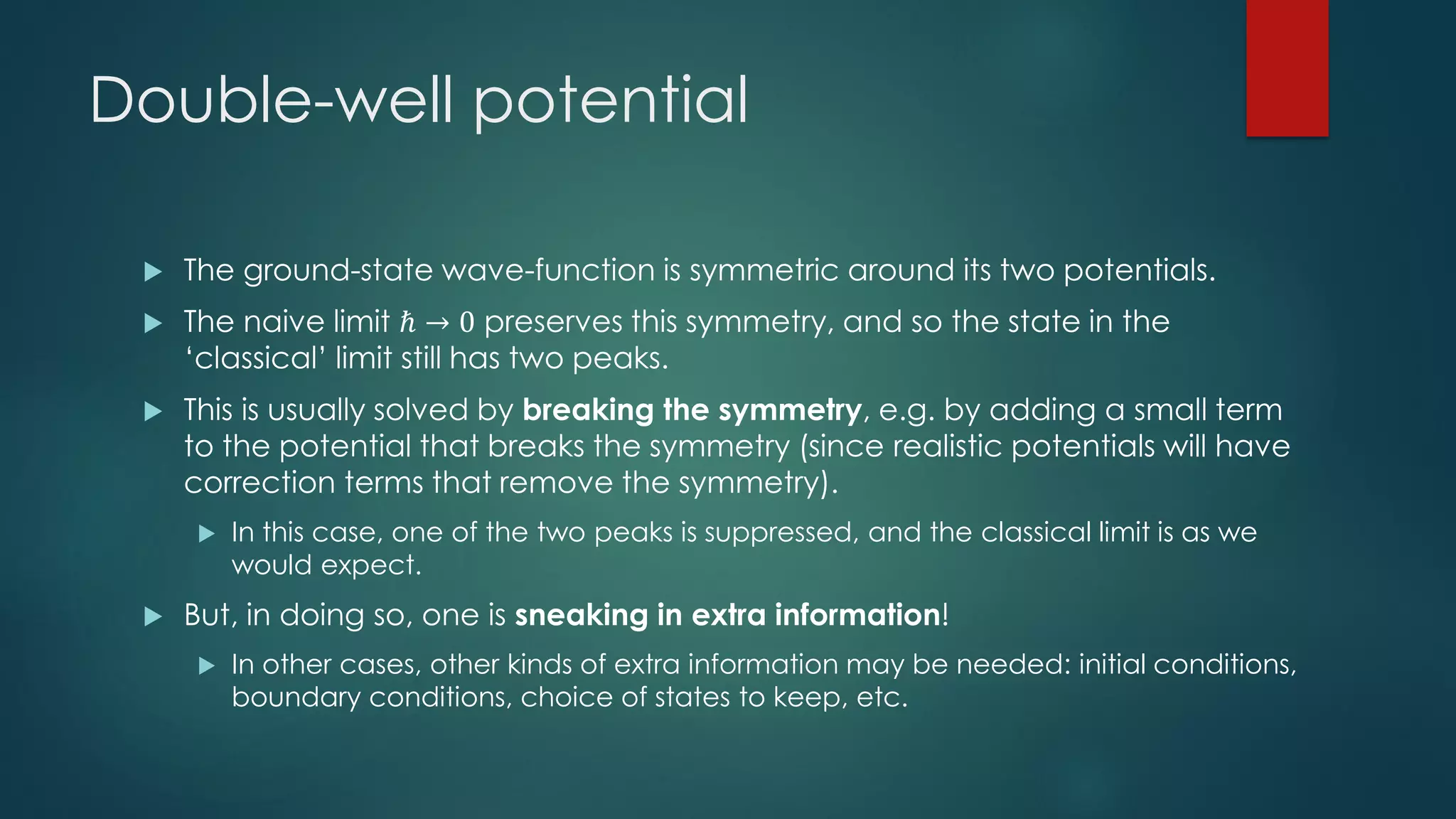

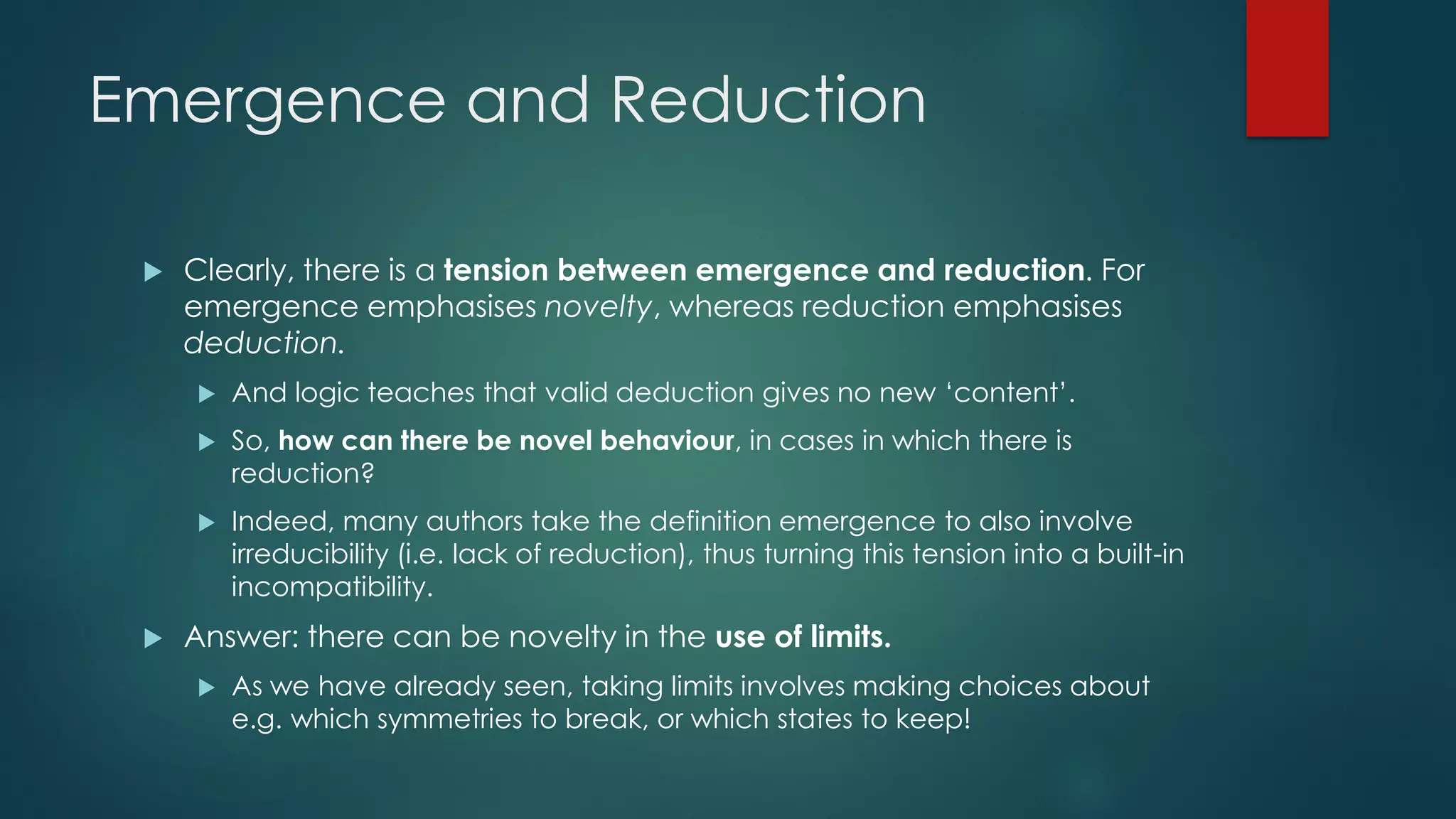
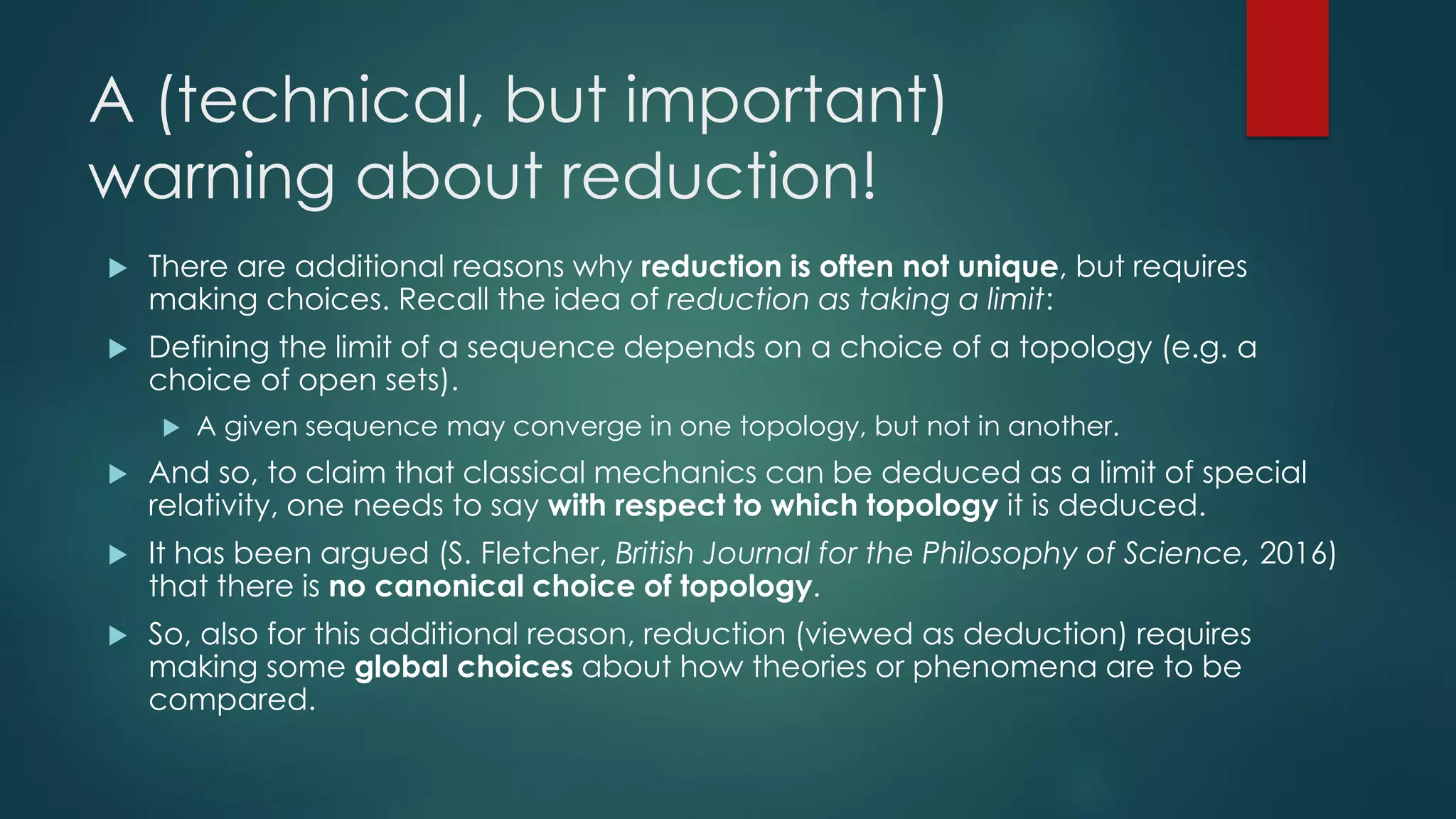
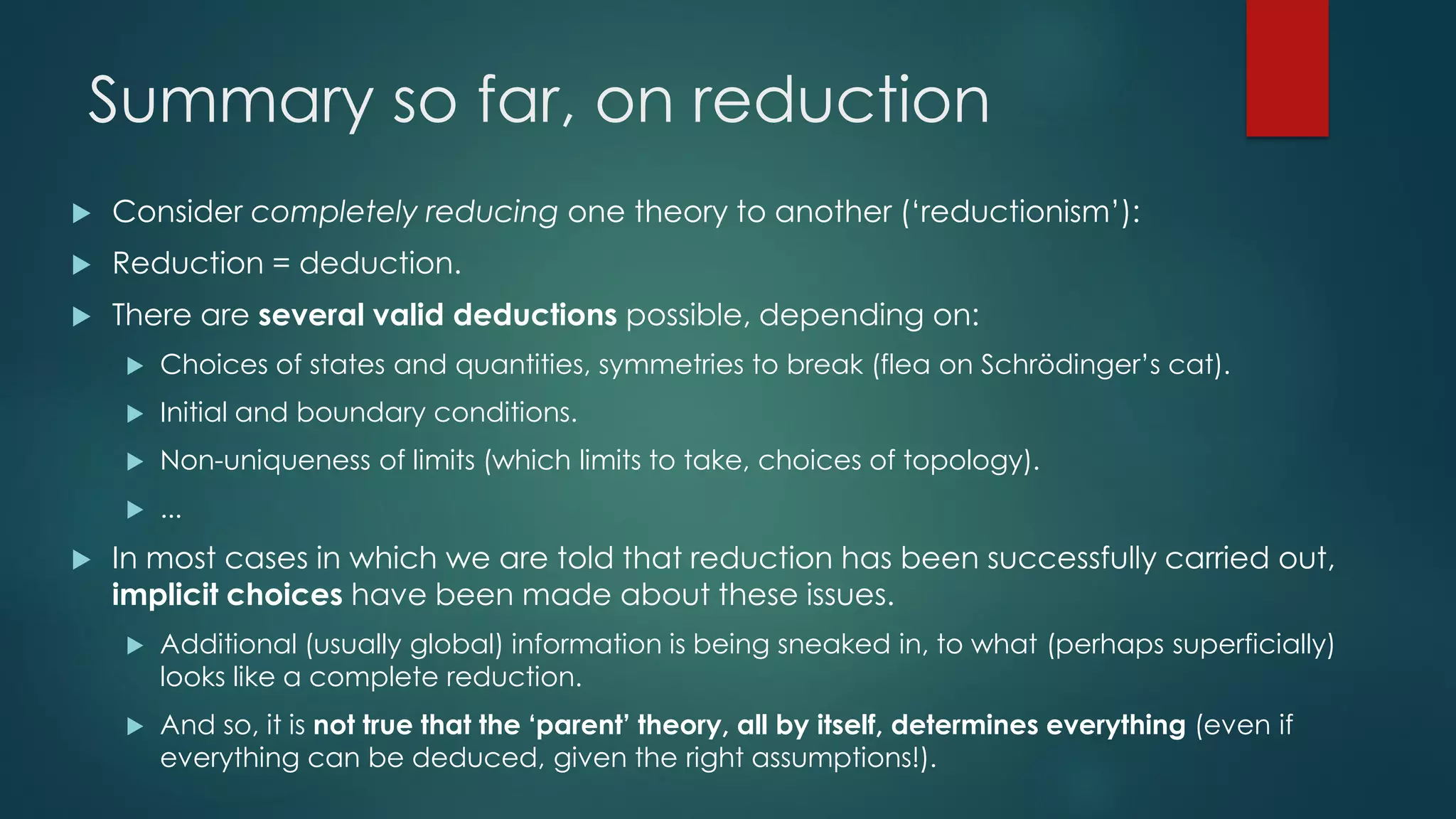
![Emergence and Reduction
This means that reduction (deduction) allows for novelty, through the choices
made.
So, emergence and reduction are, in fact, compatible!
Claim (Butterfield 2011): emergence is independent of reduction and
supervenience. So there can be emergence with or without reduction
(and the same for the weaker notion of supervenience).
Reduction without emergence: unsurprising, given that these are often seen as
each other’s opposites.
Emergence without reduction: also unsurprising.
Surprising, nevertheless, that such cases appear in physics! Vis-à-vis Anderson’s claim
that “The reductionist hypothesis... is accepted without question [by physicists]”.
See George and Sachith’s talk!
Reduction with emergence: surprising! And the examples abound!](https://image.slidesharecdn.com/170103emergence-170109185504/75/Emergence-and-Reduction-in-Physics-21-2048.jpg)
